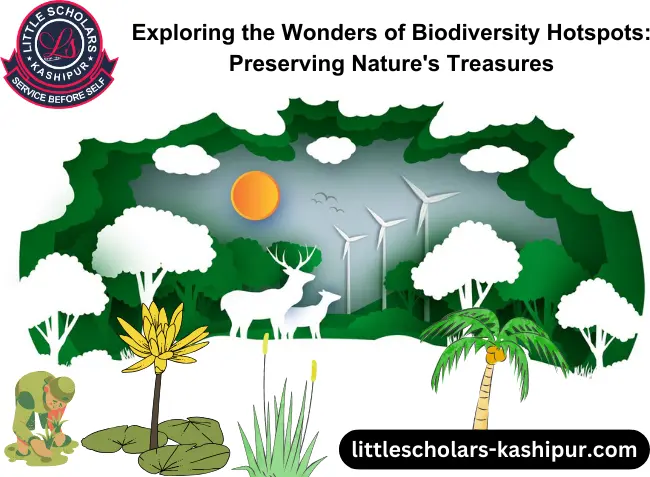Biodiversity hotspots are regions characterized by exceptionally high levels of biodiversity, containing numerous endemic species found nowhere else on Earth. Understanding these hotspots is crucial for conservation efforts and preserving the planet's natural heritage.
Understanding Biodiversity Hotspots
Biodiversity hotspots are areas with high levels of species richness and endemism. These regions play a vital role in maintaining ecological balance and providing various ecosystem services essential for human well-being.
The Significance of Biodiversity Hotspots
Ecosystem Services Provided
Biodiversity hotspots provide essential ecosystem services such as pollination, nutrient cycling, and climate regulation, benefiting both local communities and global populations.
Importance in Conservation Efforts
Preserving biodiversity hotspots is critical for safeguarding the planet's biological diversity and ensuring the survival of countless plant and animal species facing extinction.
Identifying Biodiversity Hotspots
Determining biodiversity hotspots involves specific criteria, including species richness, endemism, and habitat loss. These criteria help prioritize conservation efforts in areas most in need of protection.
Criteria for Determining Hotspots
The identification of biodiversity hotspots relies on scientific criteria developed by conservation biologists, focusing on areas with high concentrations of endemic species and significant habitat loss.
Global Distribution
Biodiversity hotspots are distributed across the globe, with notable regions in tropical forests, coral reefs, and mountain ranges. Understanding their distribution is essential for targeted conservation actions.
Discover Environmental Studies: Connecting with Nature: Read now
Threats to Biodiversity Hotspots
Despite their ecological importance, biodiversity hotspots face numerous threats, primarily driven by human activities and climate change.
Human Activities
Deforestation, habitat destruction, overexploitation of natural resources, and pollution are major threats to biodiversity hotspots, leading to the loss of species and degradation of ecosystems.
Climate Change
Rising temperatures, altered precipitation patterns, and extreme weather events pose significant challenges to biodiversity hotspots, affecting species distribution and ecosystem functioning.
Invasive Species
The introduction of invasive species disrupts native ecosystems, outcompeting indigenous flora and fauna and threatening the survival of endemic species in biodiversity hotspots.
Conservation of Biodiversity Hotspots
Conserving biodiversity hotspots requires collaborative efforts at local, national, and international levels, employing various strategies to mitigate threats and protect vulnerable ecosystems.
Conservation Strategies
Conservation strategies for biodiversity hotspots include establishing protected areas, implementing sustainable land-use practices, and promoting community-based conservation initiatives.
Role of International Organizations
International organizations such as the IUCN (International Union for Conservation of Nature) and WWF(World Wide Fund for Nature) play a crucial role in supporting conservation projects and raising awareness about the importance of biodiversity hotspots.
The Role of Physical Education in Academic Achievement: Read now
Case Studies of Biodiversity Hotspots
Several regions around the world are recognized as biodiversity hotspots, each with its own unique ecosystems and conservation challenges.
Amazon Rainforest
The Amazon Rainforest, known for its unparalleled biodiversity, is facing increasing threats from deforestation, agricultural expansion, and illegal logging, highlighting the urgency of conservation efforts.
Coral Triangle
The Coral Triangle, located in the Indo-Pacific region, harbors the highest marine biodiversity on the planet but is threatened by overfishing, habitat destruction, and climate change, endangering coral reefs and marine species.
Western Ghats
The Western Ghats of India are a biodiversity hotspot renowned for its rich flora and fauna, including numerous endemic species. However, habitat loss due to agriculture, urbanization, and infrastructure development poses significant conservation challenges.
Understanding Biodiversity Hotspots in India
Biodiversity hotspots in India are regions characterized by exceptionally high levels of species richness and endemism. These areas play a vital role in supporting diverse ecosystems and providing various ecosystem services essential for human well-being.
The Significance of Indian Biodiversity Hotspots
Unique Ecosystems and Species Diversity
Indian biodiversity hotspots encompass a wide range of ecosystems, including tropical forests, grasslands, wetlands, and coastal areas, supporting a remarkable diversity of flora and fauna.
Contribution to Global Biodiversity
India's biodiversity hotspots contribute significantly to global biodiversity, hosting a substantial proportion of the world's plant and animal species. Protecting these hotspots is essential for preserving Earth's biological diversity.
Identifying Biodiversity Hotspots in India
The identification of biodiversity hotspots in India involves specific criteria, including species richness, endemism, and habitat loss. These criteria help prioritize conservation efforts in areas most in need of protection.
Criteria for Selection
Biodiversity hotspots in India are selected based on scientific criteria developed by conservation biologists, focusing on areas with high concentrations of endemic species and significant habitat loss due to human activities.
Geographical Distribution
Biodiversity hotspots in India are distributed across the country, with notable regions in the Western Ghats, Eastern Himalayas, Western Himalayas, Indo-Burma region, and the Andaman and Nicobar Islands.
Conservation Efforts in Indian Biodiversity Hotspots
Conserving biodiversity hotspots in India requires concerted efforts at local, national, and international levels, employing various strategies to mitigate threats and protect vulnerable ecosystems.
Government Initiatives and Policies
The Indian government has implemented several conservation initiatives and policies, including the establishment of protected areas, wildlife sanctuaries, and biosphere reserves, to safeguard biodiversity hotspots and promote sustainable development.
Community Involvement and Conservation Projects
Community-based conservation projects involving local communities, NGOs, and government agencies play a crucial role in protecting Indian biodiversity hotspots, fostering stewardship and sustainable resource management.
Case Studies of Indian Biodiversity Hotspots
Several regions in India are recognized as biodiversity hotspots, each with its own unique ecosystems, species, and conservation challenges.
Western Ghats
The Western Ghats, a UNESCO World Heritage Site, are a biodiversity hotspot known for their rich floral and faunal diversity, including numerous endemic species. Conservation efforts in the Western Ghats focus on habitat restoration, wildlife protection, and sustainable livelihoods.
Eastern Himalayas
The Eastern Himalayas, spanning across northeastern India, Bhutan, Nepal, and Tibet, are a biodiversity hotspot characterized by diverse ecosystems, including montane forests, alpine meadows, and wetlands. Conservation initiatives in the Eastern Himalayas aim to address threats such as habitat loss, poaching, and climate change.
Indo-Burma Region
The Indo-Burma region, encompassing northeastern India, Myanmar, Thailand, Laos, Cambodia, and Vietnam, is one of the most biologically diverse areas on the planet. Conservation efforts in the Indo-Burma region focus on protecting critical habitats, combating illegal wildlife trade, and promoting sustainable development.
Challenges and Future Prospects
Despite conservation efforts, Indian biodiversity hotspots face numerous challenges, including conflicting land-use priorities, inadequate funding, and lack of awareness. Balancing economic development with conservation goals remains a significant challenge for the future.
Sustainable Development vs. Conservation
Finding a balance between economic development and conservation is essential for ensuring the long-term sustainability of Indian biodiversity hotspots. Integrated approaches that promote sustainable land use, eco-tourism, and community-based conservation are key to addressing this challenge.
Building a Sustainable Future: Environmental Sustainability and Stewardship in Action: Read now
Balancing Economic Growth and Environmental Protection
India's rapid economic growth poses threats to biodiversity hotspots, but it also presents opportunities for sustainable development and green growth. By incorporating biodiversity conservation into development planning and policies, India can achieve a harmonious balance between economic prosperity and environmental protection.
Conclusion
Biodiversity hotspots represent the jewels of our planet, showcasing the beauty and diversity of life on Earth. By understanding their significance, addressing threats, and implementing effective conservation measures, we can ensure that these invaluable ecosystems endure for generations to come.




